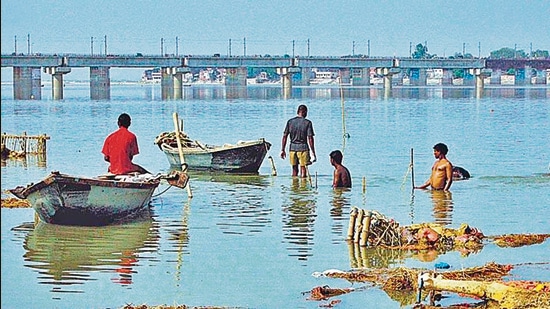India eyes river basin plantation to meet climate goal
These plantations will include riverfront development programmes, afforestation, and agroforestry schemes, according to a report on the overview of detailed project reports for rejuvenation of major rivers through forestry interventions prepared by the environment ministry.
India intends to grow plantations over 4,68,222 sq km, an area larger than the entire state of Rajasthan, by 2027 in 13 major river basins to meet its international commitment to sequester carbon emissions, according to an overview report released last week.

These plantations will include riverfront development programmes, afforestation, and agroforestry schemes, according to a report on the overview of detailed project reports for rejuvenation of major rivers through forestry interventions prepared by the environment ministry.
The proposed plantings are expected to sequester 50.21 million tonnes of carbon dioxide in 10 years and 74.76 million tonnes by 20 years. The report also estimates that the project reports of the 13 river basins will likely increase the country’s cumulative forest cover by 80.85 sq km to 1,813.52 sq km.
“One of the goals these large-scale plantations can help achieve is our climate commitment under the Paris Agreement,” said Prem Kumar Jha, inspector general of forests at the environment ministry. “There are of course other co-benefits like improving biodiversity, forest cover and flow in the rivers.”
Under the Paris climate pact, India wants to sequester 2.5-3 billion tonnes of carbon dioxide equivalent by 2030. Carbon sinks of around 1.95 billion tonnes have already been created, an official at the ministry said, requesting anonymity. The country also aims to restore 26 million hectares of degraded land by 2030 to halt the loss of biodiversity, which includes afforestation.
The 13 project reports for Jhelum, Chenab, Ravi, Beas, Sutlej, Yamuna, Brahmaputra, Luni, Narmada, Godavari, Mahanadi, Krishna and Cauvery were released by environment minister Bhupender Yadav on March 14. The government is yet to prepare similar plans for the Ganga and Brahmaputra basins.
The central government has allocated ₹19,342.62 crore to restore natural, agricultural and urban landscapes. The treatments are proposed to be spread over a period of five years with a provision for additional time for the maintenance of plantations.
The DPRs shall be adjusted using the Wholesale Price Index (WPI) since the project outlay was worked out as per costs prevailing during 2019-20.
“The river-wise likely potential benefits accrued by way of increase in forest cover, carbon sequestration, groundwater recharge, reduction in sedimentation, economic returns from the availability of varied non-timber forest produce and other forest produce, and employment generation as a result of a wide range of forestry interventions proposed in 13 rivers have been estimated,” the overview report said.
An important feature of the schemes includes ensuring environmental flow in rivers that is required for terrestrial, freshwater and estuarine ecosystems to perform their natural ecological functions. The Centre had notified the minimum environmental flows for the Ganga in October 2018, but environmental flows for other rivers have neither been defined nor notified.
“When there are fewer trees, soil sedimentation and erosion is high, but with the plantations, we are expecting sedimentation to reduce and, hence, freshwater flow to increase,” Jha said.
The government through the National Water Development Agency (NWDA) and Jal Shakti ministry has started a programme of interlink rivers. NWDA has identified 30 such linking projects. The government has prepared detailed project reports for the Ken-Betwa link, the Daman Ganga-Pinjal link, and the Par-Tapi-Narmada link.
However, large-scale plantations on river basins are challenging because of mixed land use and several laws governing rivers and forests.
“The plantations will be implemented by state forest departments if they are in forest land. The rest will be implemented by respective departments,” Jhas aid. “We do not expect the rights of common people to be affected. Land use will not change and rights will remain as earlier. Some plantations may be fenced for a temporary period for better care.”
The planned plantations could infringe on existing habitation, rights of local people and ownership of land, experts have warned.
“The proposal is designed to monetize riverfront land for creating carbon sinks and tourism, both of which can infringe existing habitation, ownership and uses which will need administrative reconciliation,” said Kanchi Kohli, legal researcher at the Centre for Policy Research, a think tank. “A socio-ecological audit of the full proposal and entire DPR is essential to map legal conflicts and address potential injustices that such a government-led land monetization exercise may lead to.”
Get Current Updates on India News, Lok Sabha Election 2024 live, Infosys Q4 Results Live, Elections 2024, Election 2024 Date along with Latest News and Top Headlines from India and around the world.



